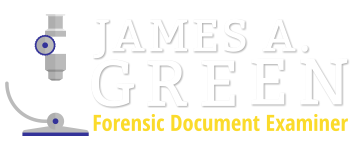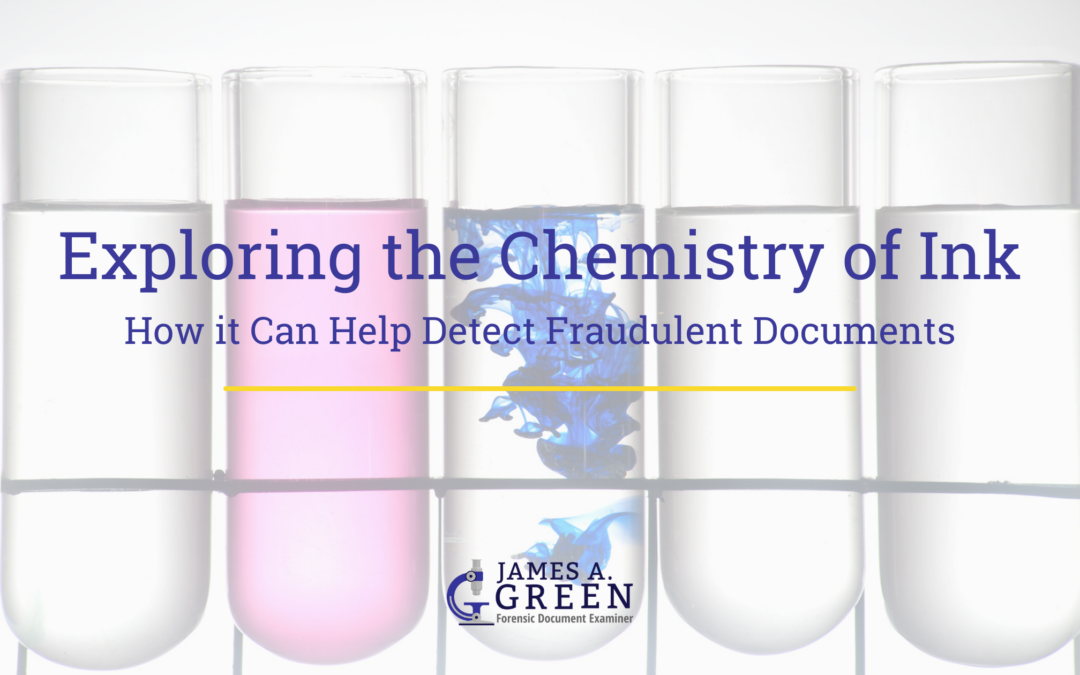Ink may seem like a relatively straightforward substance, but at its core, it’s a complex mixture of pigments, dyes, solvents, and other chemicals that can reveal much about the pens we write with it. That’s where ink chemistry comes in – the study of how different inks are composed and how they interact with other materials. This study can have numerous applications in the world of forensics. Ink analysis can help determine the authenticity of signatures. For example, if a will was purportedly signed in 2015, but the ink was not manufactured until 2018, we know the signature of the decedent could not be authentic. Ink chemistry is a fascinating field that combines scientific research with real-world applications, making it a crucial tool for anyone looking to uncover the secrets hidden in a piece of writing.
The Different Types of Inks
When analyzing documents, a consideration may be identifying the type of ink used. Ink chemists rely on various techniques to detect and distinguish between inks, including chromatography and microscopy. Writing inks come in different forms, commonly classified as dye-based or pigment-based. Dye-based inks are commonly used in both writing instruments and inkjet printers, with the dye dissolved in water. On the other hand, pigment-based inks contain microscopic particles that do not dissolve in water. Each type has its advantages and disadvantages.
Understanding the Role of Solvents in Ink Analysis
The application of solvents in ink not only plays a significant role in the manufacturing process but also in the analysis and identification of inks. Understanding the chemical composition of solvents used in ink production provides valuable insights into the authenticity of documents and forgery detection. It is fascinating to explore the relationship between solvents and ink and how the manipulation of this delicate balance can alter the composition and properties of inks. Through a thorough understanding of the role solvents play ink analysts can accurately determine the origin and date of ink samples.
Analyzing Inks Using Visible Light Microscopy (VLM)
Do you ever wonder how investigators detect counterfeit money or forgeries in important documents? A laboratory instrument commonly utilized is called a Video Spectral Comparator (VSC.) The instrument examines ink in the infrared and ultraviolet light spectrum. The non-destructive test will confirm the presence, or absence, of the unique inks used in the printing of secure documents.
How Gas Chromatography/Mass Spectrometry (GC/MS) Can Identify Ink Components
Gas Chromatography/Mass Spectrometry (GC/MS) is a powerful technique that can be used to identify ink components. This state-of-the-art technology involves separating the ink components in a sample using gas chromatography and then identifying them using mass spectrometry. The process works by passing a sample of the ink through a column that separates the individual components based on their chemical properties. Once separated, the individual components are then sent to a mass spectrometer, which identifies the specific compounds present. This information is invaluable in determining the origin of a document or the authenticity of a signature. With GC/MS, ink specialists can solve crimes and provide critical evidence with unparalleled accuracy.
To Conclude
Ink chemistry offers several analysis possibilities in document examinations, providing evidence in the investigation of fraudulent documents, uncovering hidden alterations and signature forgeries, as well as in authenticating documents. By using various scientific techniques to analyze the ink’s composition, ink specialists and forensic document examiners can reconstruct a specific document’s timeline, establish the document’s authenticity, and provide evidence in court when needed. This process requires in-depth knowledge and extensive training, highlighting the importance of expert ink chemists in our justice system. The study of ink chemistry is an excellent example of how science and technology intersect to solve real-world problems.
Advice From an Expert
If you have a document that needs verification, contact James A. Green—a Forensic Document Examiner with more than 30 years of experience. He can help resolve ink issues in a non-destructive manner. However, ink dating is not a testing process typical to most document examiners, particularly in private laboratories. Chemical analysis for ink dating is a very specialized field. If ink dating would be of benefit to your case, James Green can help refer you to an ink chemist.

